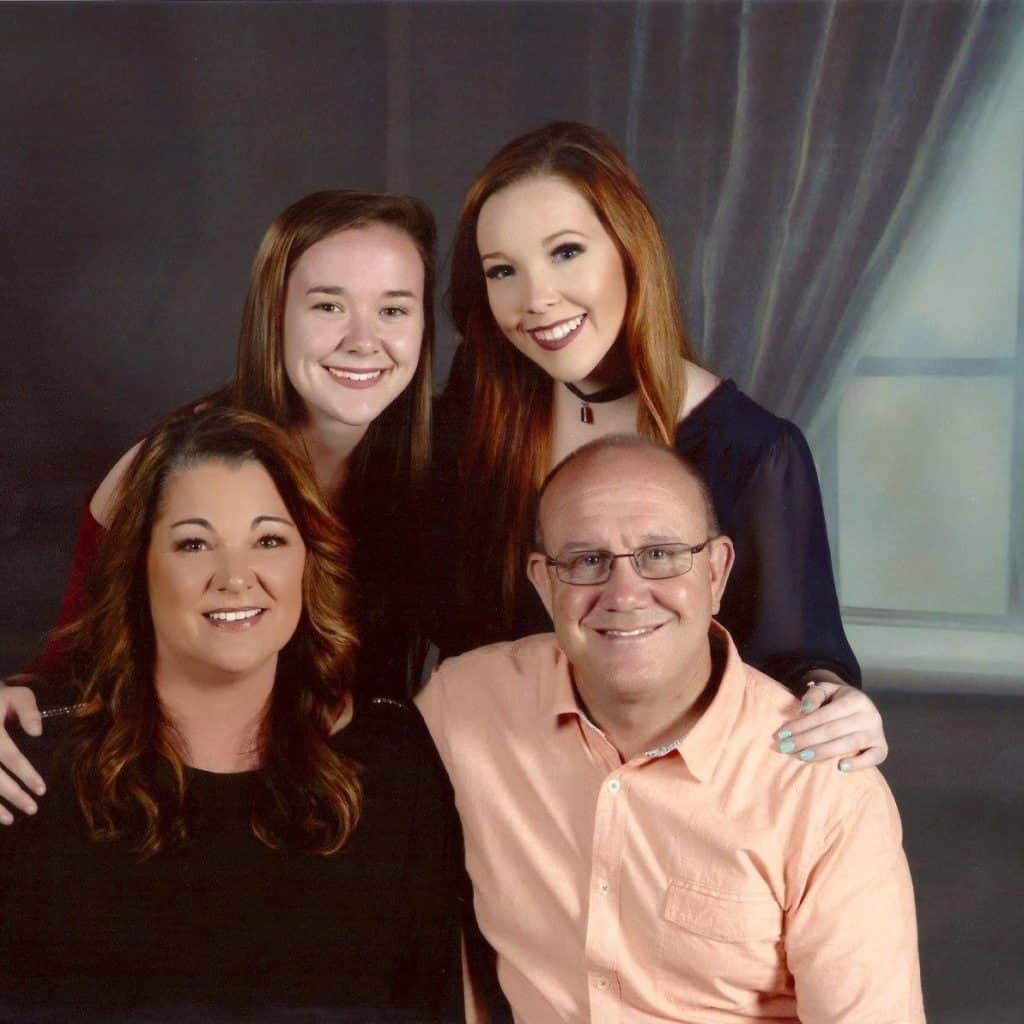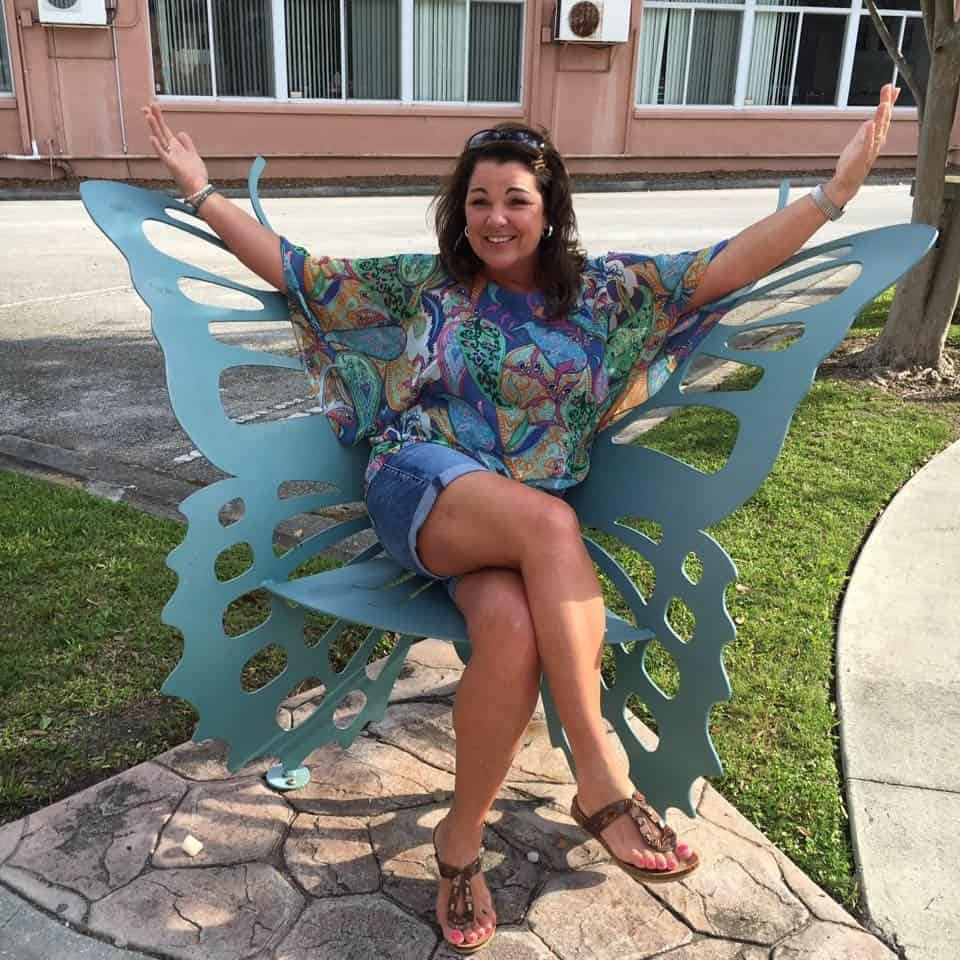Retired Police Officer Finds ‘Top-Notch’ Breast Cancer Treatment at UAMS
| Patty Allen is the first to admit it: Mammograms make her nervous.
With no history of breast cancer in her family, she never imagined the test would come back positive. But the experience always left her rattled nonetheless.
That’s one reason Allen starting having her annual screenings aboard the MammoVan, a mobile mammography unit operated by UAMS.
“The women who work on the MammoVan are wonderful and really make me feel at ease,” said Allen, who spent 28 years as an officer with the Little Rock Police Department.

Patty Allen (left) with her husband, Todd Allen, and their daughters , Holly Allen (back left) and Miranda Allen Walters.
One of those MammoVan staff members is Allen’s long-time friend, Crystal Smith.
“Crystal is always on me about getting my mammogram,” Allen said. Smith has been a mammography technologist for 11 years at UAMS, five of them aboard the mobile unit.
The MammoVan regularly travels across Arkansas offering quick and efficient screening mammograms for women who either do not have access to a mammography facility or who, like Allen, simply prefer the convenience.
In Allen’s case, the ability to use the MammoVan would ultimately impact her life in a way she never expected.
With Smith’s encouragement and the ease of having the MammoVan in her hometown of Cabot, Allen managed to keep most of her annual appointments, with the exception of 2018.
“For whatever reason, I skipped my 2018 mammogram. But after that, Crystal wasn’t having it,” she laughed.
Although Allen and her husband moved to Colorado about two years ago, she frequently returns to Arkansas for extended visits so she can travel with her daughter’s college basketball team.
It was during one of those visits in February 2019 when Allen kept her promise to Smith and received her annual screening aboard the MammoVan.
“I thought I was done for another year,” she said.
Then the phone rang.
While she expected the caller to give her good news about a normal test result, that unfortunately was not the case.
“When my radiologist called and asked me to come into the UAMS Breast Center for a biopsy, I knew something wasn’t right,” she said.
The MammoVan staff worked with the UAMS Breast Center to schedule Allen’s biopsy for a few days later. When the results came back positive, she and her husband weighed her options.
Because the cancer was found early, it was considered Stage 0, ductal carcinoma in situ (DCIS), meaning the abnormal cells were contained within a milk duct but had not spread to nearby tissue.
However, evaluation of the biopsy cells did note that it was a high grade tumor.
“Tumor grade refers to what the cells look like under a microscope. High-grade cancer cells tend to be more aggressive than low-grade cells. Although we don’t know if Mrs. Allen’s cancer would have eventually spread, about 30% of tumor cells found in the duct do go on to become invasive cancer, which can then spread to other parts of the body,” said Daniela Ochoa, M.D., a breast surgeon and associate professor in the UAMS College of Medicine Department of Breast Surgical Oncology.
Due to the large segment of duct affected by cancer cells, a lumpectomy was not recommended. Ochoa instead told Allen that removal of her left breast was the best option with the lowest risk the cancer would return.
For her own peace of mind, Allen chose to undergo a double mastectomy instead.
“I didn’t want the burden of worrying about it coming back in my other breast someday,” she said.
In addition to the double mastectomy, Allen also elected to undergo reconstruction. In discussing her options with plastic surgeon Keith Wolter, M.D., she was pleased to find out she could undergo both surgeries back to back under the same anesthetic. Wolter is associate professor in the UAMS College of Medicine Division of Plastics and Reconstructive Surgery.
Breast reconstruction often involves the surgeon placing expanders under the muscle after the breasts are removed. Over time, the expanders stretch the muscle, creating a pocket into which the implants are placed during a second surgery.
However, since Allen already had breast implants, the pocket was already formed and the muscles did not require additional stretching.
“I was the perfect candidate to have my mastectomy and reconstruction done at the same time. It was really a blessing,” she said, adding that the surgical team made her feel comfortable and assured that she was in the best hands.
“Dr. Ochoa, Dr. Wolter and their entire teams were top notch. I left the hospital with a plan for my recovery, which was such a relief,” she said.
After awakening from her 11 ½ hour surgery at UAMS on May 14, Allen was told there was no evidence of cancer in her lymph nodes and she was now considered cancer free.
Following a few weeks recuperating at Smith’s house, Allen was released to return home to Colorado.
“I knew I could trust the world-class care at UAMS. I’m thankful to everyone at the MammoVan and the UAMS Breast Center, along with my surgical teams, for their kindness, expertise and understanding,” she said.

